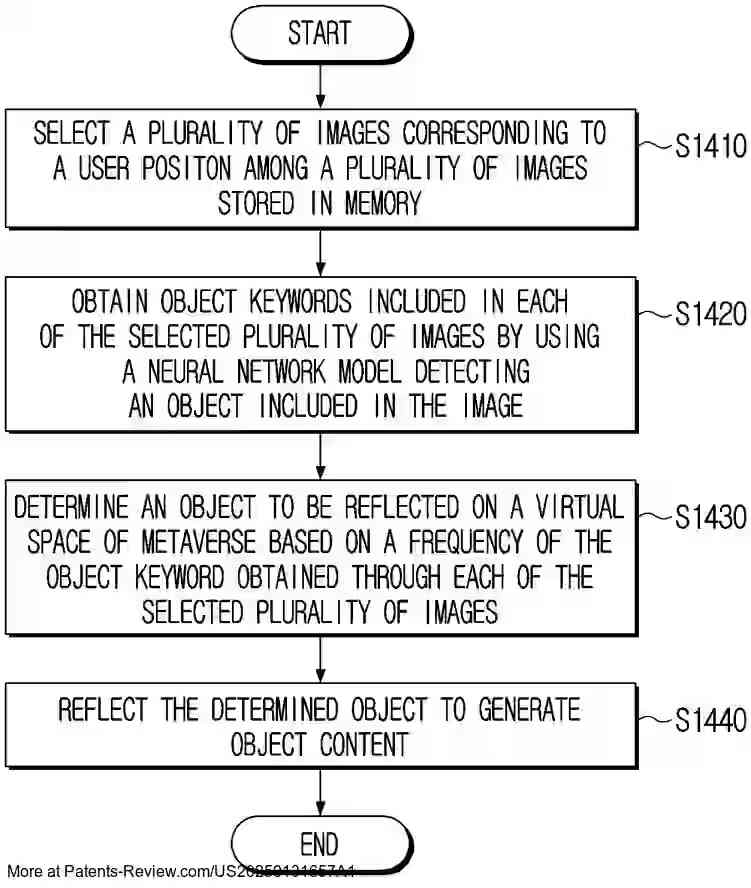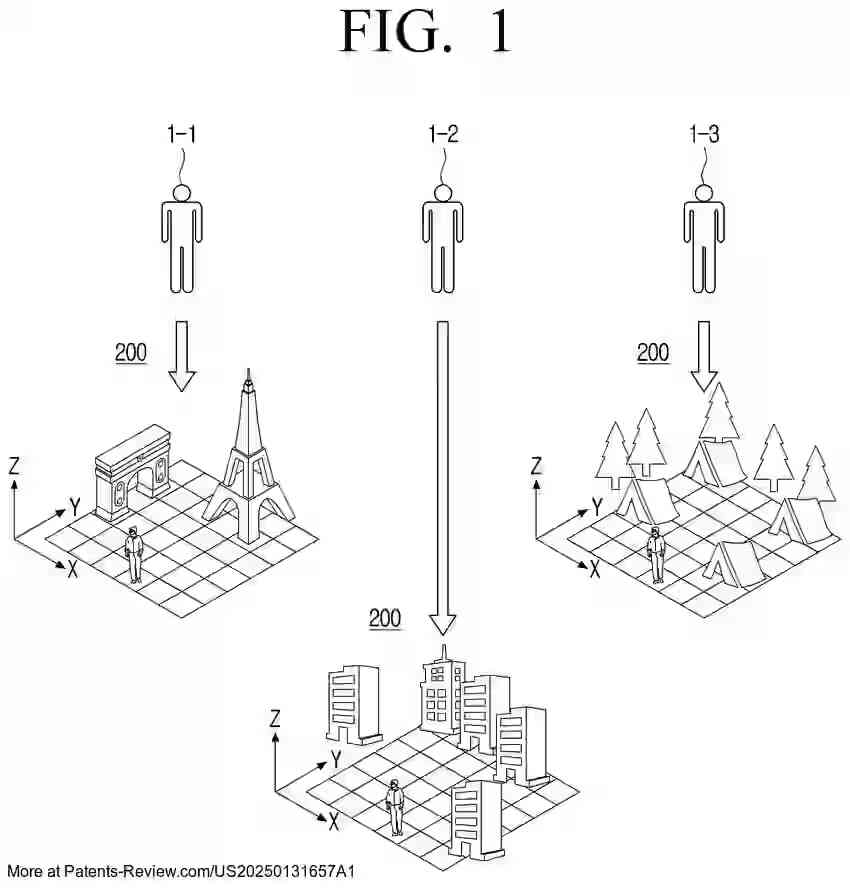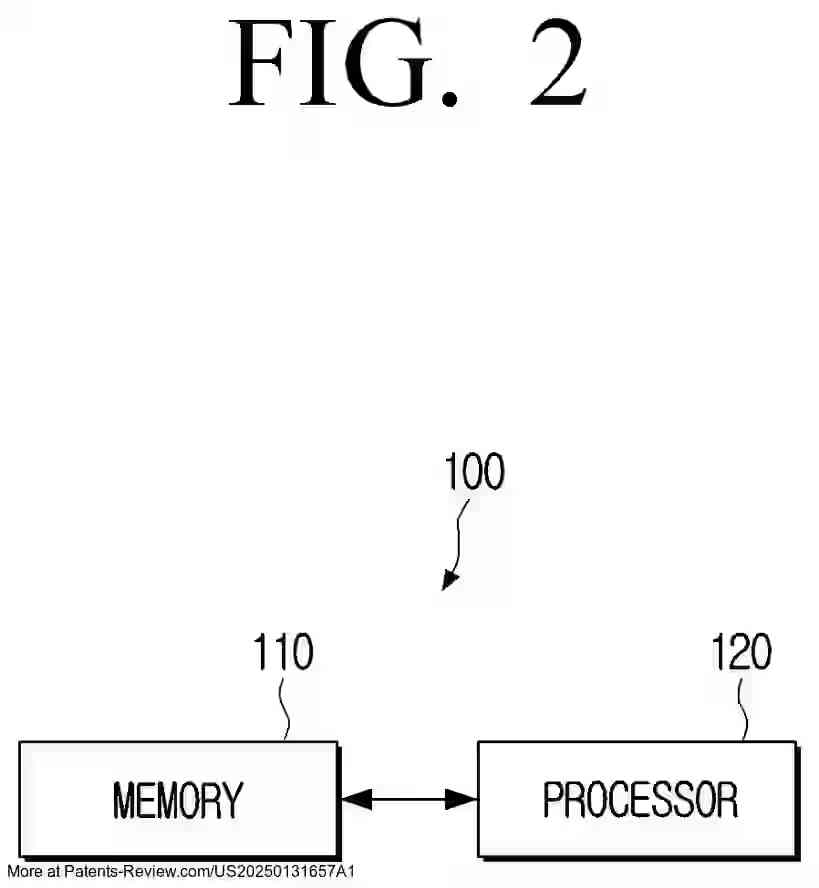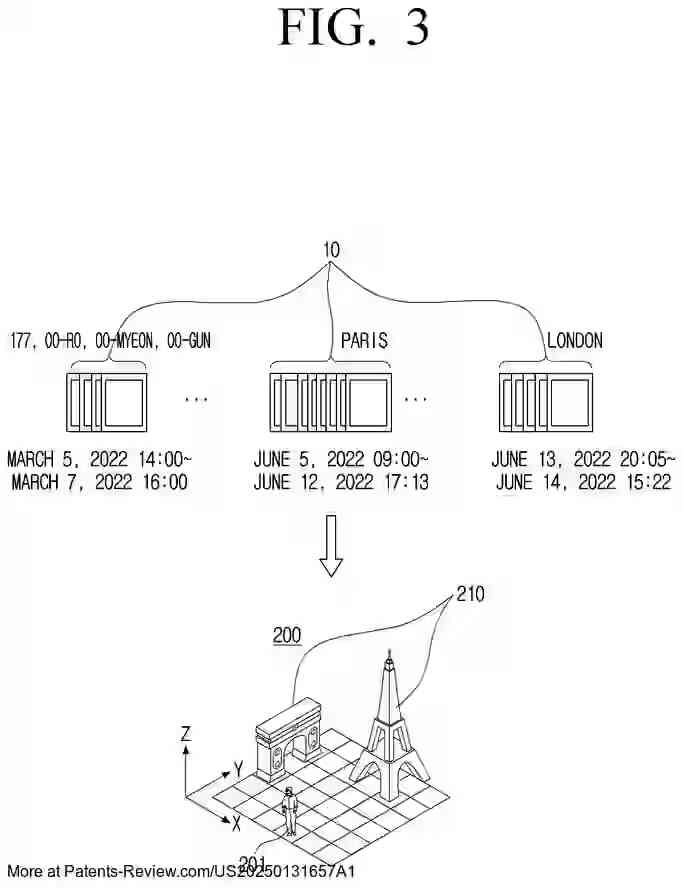ELECTRONIC DEVICE FOR PROVIDING USER-CUSTOMIZED METAVERSE CONTENT AND CONTROL METHOD THEREFOR
US20250131657
2025-04-24
Physics
G06T19/00
Inventors:
Applicant:
Drawings (4 of 17)




Smart overview of the Invention
The patent application describes an electronic device designed to provide user-customized content within a metaverse environment. The device incorporates memory that stores multiple images and a processor that utilizes these images to generate content for a virtual space. The processor is capable of selecting images based on the user's location, identifying keywords from these images, and determining which objects should be represented in the metaverse based on keyword frequency.
Functionality
The electronic device's processor can identify the frequency of object keywords and select those that meet or exceed a specified threshold. It then determines which objects to include in the metaverse based on these selected keywords. Additionally, the processor evaluates semantic similarity between user locations and keywords to refine object selection further, ensuring that the virtual space accurately reflects user preferences and context.
Customization
The device offers advanced customization by analyzing background keywords if the user's position is not predefined. This analysis allows the creation of background content that complements the object content, enhancing the immersive experience. The processor can also consider emotional context by evaluating text data related to the user's location to adjust the virtual environment accordingly.
Interaction with Server
The device includes a display component that interacts with a server to transmit object content and receive virtual space images. This interaction enables the display of customized virtual environments, ensuring that users experience a dynamic and personalized metaverse. The system also provides a user interface for displaying image content within these environments, aligning with user-generated object content.
Real-time Adaptation
The processor is designed to adapt in real-time by sensing changes in user position and selecting relevant images accordingly. This capability ensures that as users move through different spaces, the metaverse content dynamically updates to reflect new contexts and preferences. Such real-time adaptation enhances user engagement by providing a continuously evolving virtual experience.